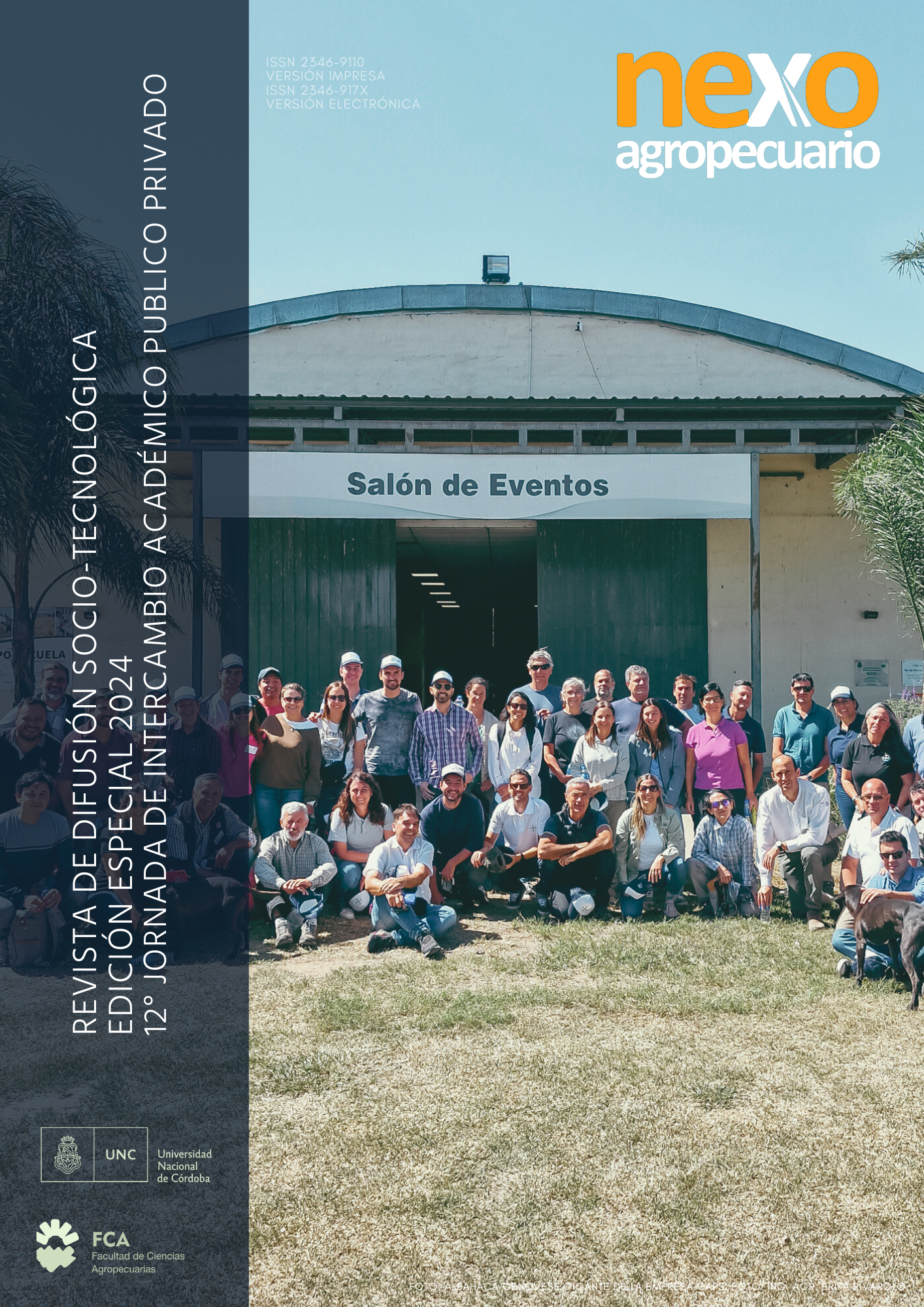WHAT WERE THE STRATEGIES OF GENETIC IMPROVEMENT OF MALTING BARLEY IN ARGENTINA IN THE LAST 40 YEARS?
Keywords:
variations, performance, quality, cultivars, malting barley, ArgentinaAbstract
Barley is the fourth largest cereal crop in the world in terms of production volume, behind corn, rice and wheat (FAOSTAT, 2022). In South America, Argentina is the largest producer of barley (USDA, 2022), specializing in malting barley whose production has increased significantly and steadily since the late 1980s. The production volume of a crop depends on the area devoted to it and the yields achieved. Given the physical limitation of expanding the agricultural area, the key to increasing production lies in increasing the yield achieved per unit area. In this context, genetic improvement plays an important role in increasing yields per unit area. Year after year, there has been evidence of a sustained increase in barley yields in Argentina (BCR, 2022), associated with the process of genetic improvement and progress in the knowledge of the crop and the application of new production technologies (Abeledo et al., 2003; Satorre and Andrade, 2020). Previous studies determined that the rate of yield gain of malting barley in Argentina due to the effect of genetic improvement was 41 to 27 kg ha-1 yr-1, depending on the environmental condition and the period considered (Abeledo et al. considered (Abeledo et al., 2003; Giménez, 2017); with cultivars released up to the years 1998 and 2007, respectively. Until the 1990s in Argentina, the malting barley market was dominated by cultivars developed in breeding programs.
References
Abeledo, L. G., Calderini, D. F., Slafer, G. A. 2001. Physiological changes associated with breeding progress in barley. En: Barley: Recent advances from molecular biology to agronomy of yield and quality. Eds. Slafer, G. A., Molina Cano, J. L., Araus, J. L., Savin, R., Romagosa, I. Journal of Crop Production. The Haworth Press, Inc. New York. pp. 361-385.
Abeledo, L. G., Calderini, D. F. & Slafer, G. A. 2003. Genetic improvement of barley yields potential and its physiological determinants in Argentina (1944–1998). Euphytica, 130, 325-334.
BCR, 2022. Bolsa de Comercio de Rosario. https://www.bcr.com.ar/es/mercados/investigaciony-desarrollo/informativo-semanal/noticiasinformativo-semanal-38. Verificado Mayo 2022
Condón, F., Rasmusson, D. C., Schiefelbein, E., Velasquez, G. & Smith, K. P. 2009. Effect of advanced cycle breeding on genetic gain and phenotypic diversity in barley breeding germplasm. Crop Science, 49, 1751- 1761.
Cossani, C. M., Palta, J. & Sadras, V. O. 2022. Genetic yield gain between 1942 and 2013 and associated changes in phenology, yield components and root traits of Australian barley. Plant and Soil, 480, 151-163.
Di Rienzo J.A.et al. 2010 InfoStat. Profesional Group InfoStat, FCA, Universidad Nacional de Córdoba, Argentina
FAOSTAT. 2022. Datos sobre alimentación y agricultura, Cultivos y productos de ganadería Verificado mayo 2022. https://www.fao.org/faostat/es/#home
Gil, A., Miravalles, M. T., Moreyra, F., Conti, V. 2016. Calidad industrial de la cebada cervecera: impacto de la fecha de siembra. Editorial Departamento de Agronomía, Universidad Nacional del Sur.
Gimenez, F.J. 2017. Ganancia Genética en Cebada Cervecera (Hordeum vulgare L.) en Argentina durante el período 1931-2007. Tesis de Doctor en Agronomía. Universidad Nacional del Sur.
Laidig, F., Piepho, H. P., Rentel, D., Drobek, T., & Meyer, U. 2017. Breeding progress, genotypic and environmental variation and correlation of quality traits in malting barley in German official variety trials between 1983 and 2015. Theoretical and Applied Genetics, 130, 2411-2429.
Lo Valvo, P. J., Miralles, D. J., & Serrago, R. A. 2018. Genetic progress in Argentine bread wheat varieties released between 1918 and 2011: Changes in physiological and numerical yield components. Field Crops Research, 221, 314-321.
Otero, E. A., Miralles, D. J., & Benech-Arnold, R. L. 2021. Development of a precise thermal time model for grain filling in barley: A critical assessment of base temperature estimation methods from field-collected data. Field Crops Research, 260, 108003.
Radushev et al. 2012. GraphPadPrism versión 8.0.0 for Windows, GraphPad Software, San Diego, California, USA. www.graphpad.com
Reynolds, M. P., Atkin, O., Bennett, M. J., Cooper, M., Dodd, I. C., Foulkes, M. J. & Pogson, B. 2021. Addressing Research Bottlenecks to Crop Productivity. Trends in Plant Science, 26, 607-630.
Rodrigues, O., Minella, E., & Costenaro, E. R. (020) Genetic improvement of barley (Hordeum vulgare, L.) in Brazil: Yield increase and associated Traits. Agricultural Sciences, 11, 425-438.
Satorre, E. H., & Andrade, F. H. 2021. Cambios productivos y tecnológicos de la agricultura extensiva argentina en los últimos quince años. Ciencia Hoy, 173, 19-27.
Savin R., Aguinaga, A.A. 2011. Los requerimientos de la industria: calidad comercial e industrial y sus determinantes. En Mirallles, D., Benech-Arnold, R., Abeledo, G. (Eds), Cerbada cervecera (pp 211-213). Editorial Facultad de Agronomía.
USDA 2022. United States Department of Agriculture. Foreign Agricultural Service. https://apps.fas.usda.gov/psdonline/app/index.html#
/app/statsByCommodity. Verificado mayo 2022.
Downloads
Published
Issue
Section
License
Copyright (c) 2024 C. Ibañez, L. G. Abeledo, D. Rondanini, D. Miralles

This work is licensed under a Creative Commons Attribution-NonCommercial-ShareAlike 4.0 International License.
Attribution - Non-Commercial - Share Alike (by-nc-sa): No commercial use of the original work or any derivative works is permitted, distribution of which must be under a license equal to that governing the original work.


